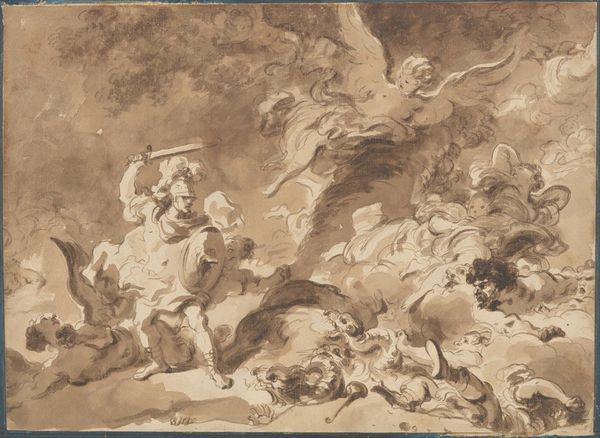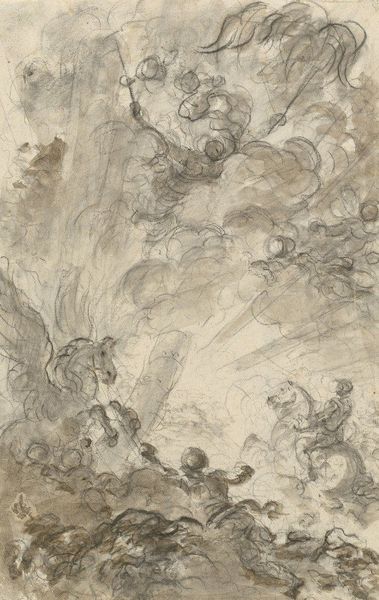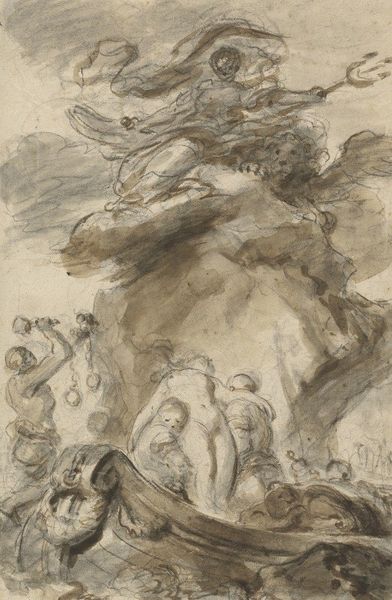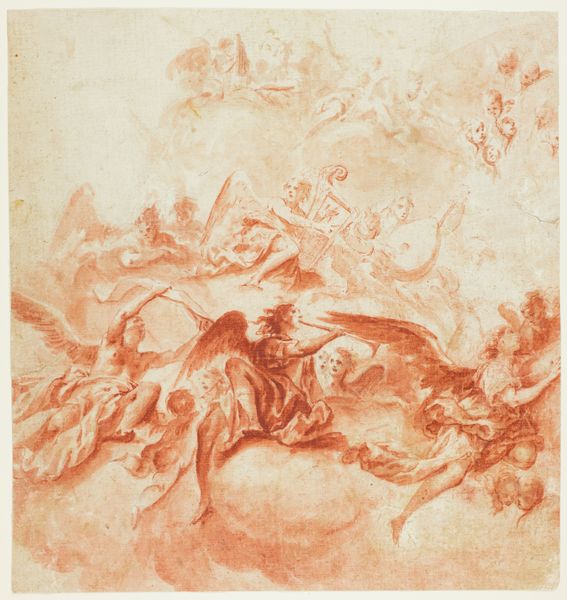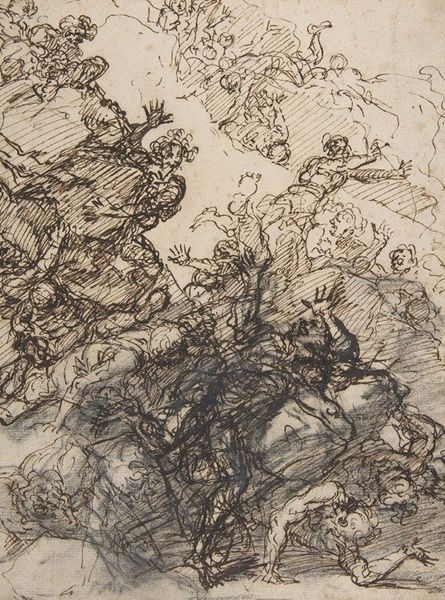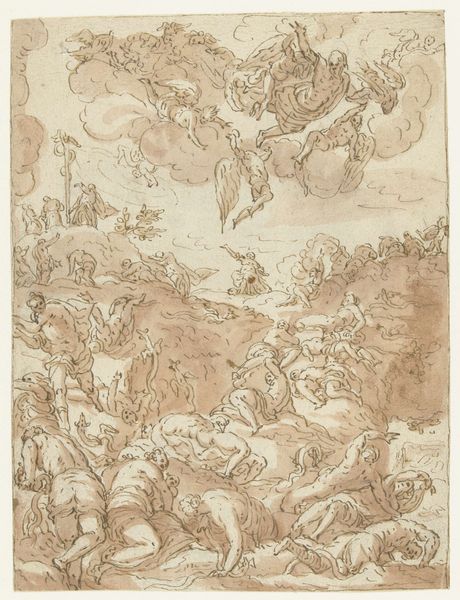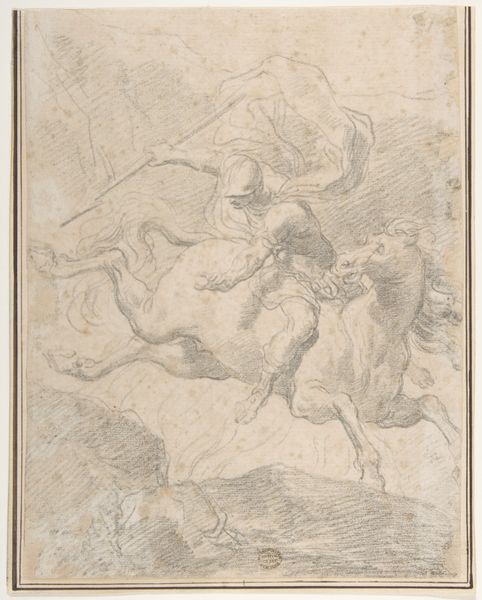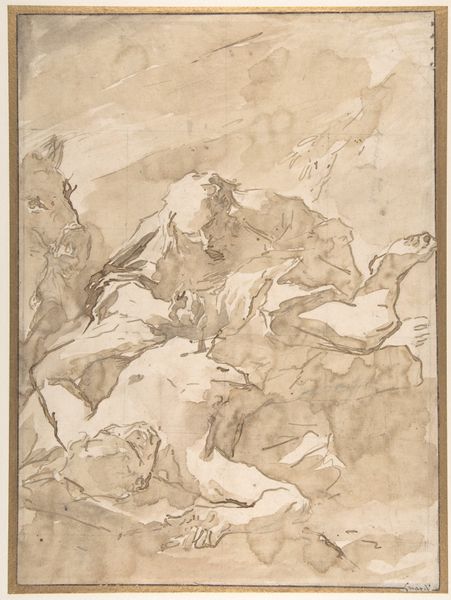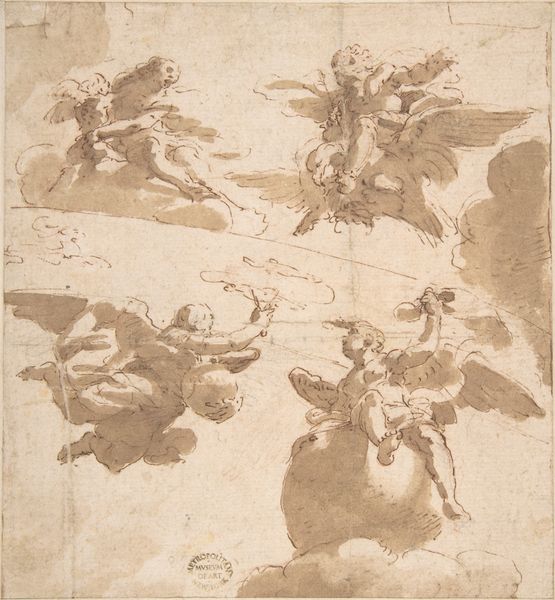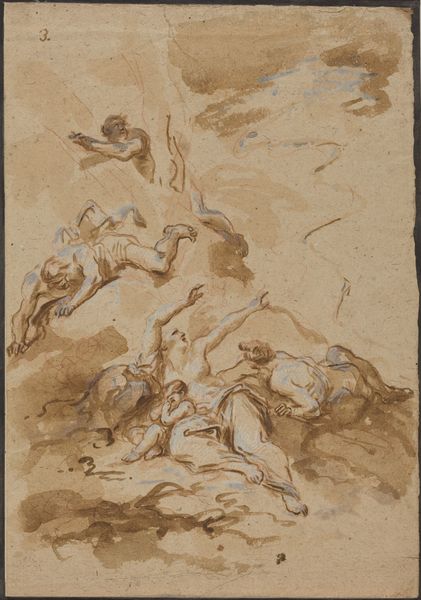
drawing, pencil, charcoal
#
drawing
#
narrative-art
#
landscape
#
charcoal drawing
#
figuration
#
charcoal art
#
pencil drawing
#
romanticism
#
pencil
#
charcoal
#
history-painting
#
watercolor
Copyright: Public Domain: Artvee
Editor: This drawing is "Rinaldo, Astride Baiardo, Flies Off in Pursuit of Angelica" by Jean-Honoré Fragonard, made around 1795, using charcoal and pencil. It strikes me as quite dynamic; the figures seem to be caught in a whirlwind of motion. What elements stand out to you in its composition? Curator: Indeed. Immediately, the energetic lines dictate a forceful upward movement. The contrast between the darker, more defined foreground and the hazy background creates a sense of depth, drawing the eye through different planes. Consider the intentional blurring of forms – how does that affect your interpretation of the subject matter? Editor: It almost feels unfinished, like a fleeting vision or a memory being captured. Is this common in Fragonard's drawings? Curator: This is very characteristic of Fragonard’s later draftsmanship. His style employed a rapid, almost improvisational manner. Note how form arises out of gestural marks, especially in the delineation of figures like the hero, Rinaldo. The texture, achieved through hatching and cross-hatching, imbues the landscape with a tactile quality despite its fantastical subject matter. It's a balance of precision and suggestive imprecision. Editor: So the visual language itself contributes to the overall sense of dramatic urgency and perhaps romantic ideals? Curator: Precisely. The formal elements—line, texture, composition—aren’t merely representational but constitutive of the very mood and meaning the artwork conveys. Fragonard expertly uses the inherent properties of his materials to articulate this visual narrative, capturing movement as subject and movement as mark-making technique. Editor: That really opens my eyes to the active role that drawing can play in constructing not just an image, but an experience. Curator: Exactly. We begin to see how formal analysis unlocks the dynamic tension inherent in Fragonard's work. There’s so much more beyond simple representation.
Comments
No comments
Be the first to comment and join the conversation on the ultimate creative platform.
